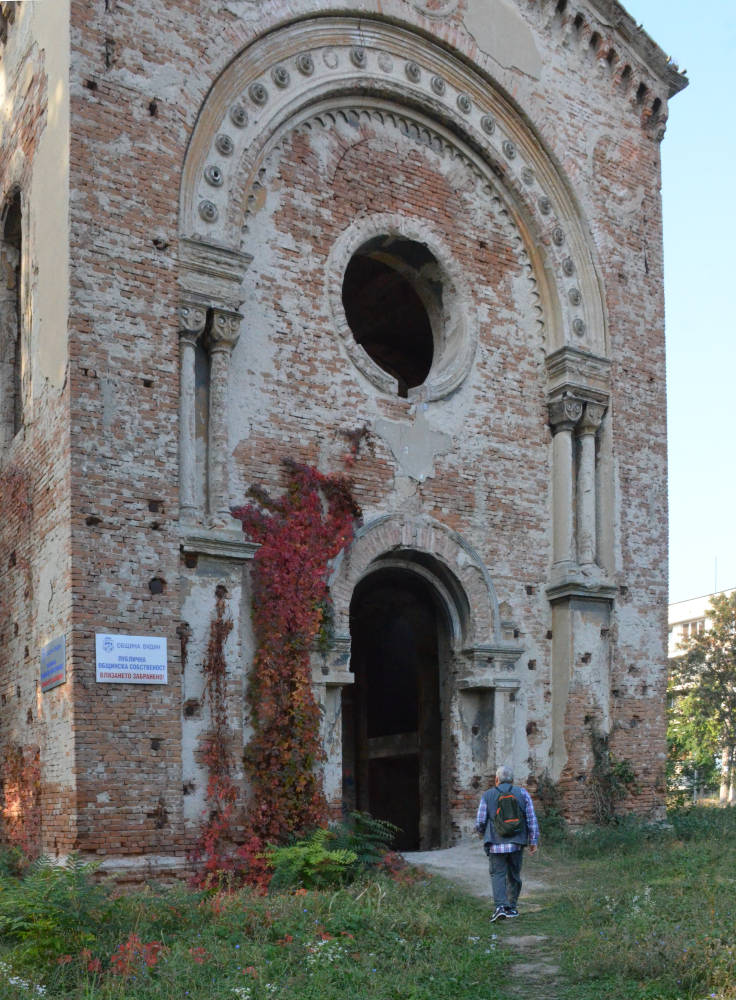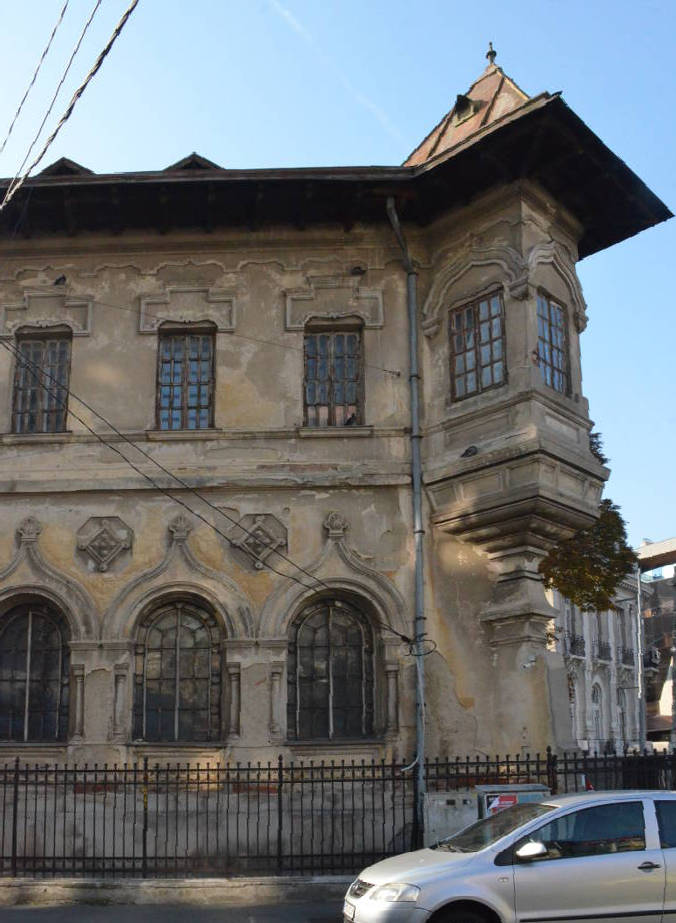

Catedra Sfintii Apostoli Petrus si Pavel (1885; restored 1951), Constanta, Romania. [Click on these images for larger pictures.]
Like the gothic elements in many English country churches, the Romanesque ones in Eastern European buildings — particularly windows rounded at the top — seem as much survivals as much as a matter of revivals, something obvious in the many Eastern Orthodox churches in the region. In fact, choice of architectural style usually denotes the religious denomination of the congregation, Roman Catholics building in Neo-Gothic and the Eastern Orthodox in Neo-Romanesque or Neo-Byzantine styles.
These Eastern European survival-or-revival styles occasionally appear in the most unexpected places, such as the now-ruined synagogue in Vidin, Bulgaria, which features Neo-Romanesque windows, doorways, columns, and capitals.




The brick arches and the cast iron capitals and supporting columns.

Very often nineteenth- and early twentieth-century Eastern European architects made use of but a single Romanesque element, the window with rounded top supported by columns, in structures in other styles. This building on the Piazza Romana adjacent to Bucharest University’s economics faculty has one set of third-floor windows and another on the second story corner that architecturally have nothing to do with the other rectangular windows, roof, and roof decoration.
The former City Hall (now history museum) in Constanta, Romania (see below), uses arches and columns, though not windows, in a building resembling a Renaissance palazzo:


An interestingly eclectic building, also on the Piazza Roman in Bucharest, places rounded windows within curved ogive arches that derive either from Gothic or Moorish architecture:


As the photograph at the right shows, the upper story has rectangular windows, and the square second-story tower with a pyramidal roof seems part of the local vernacular. Perhaps one should follow the example of J. Mordaunt Cook’s discussion of Victorian architecture of William Butterfield, and describe such buildings as “Rogue Romanesque.”
References
Crook, J. Mordaunt. The Dilemma of Style: Architectural Ideas from the Picturesque to the Post-Modern. Chicago: University of Chicago Press, 1987.
Fletcher, Banister, and Banister F. Fletcher. A History of Architecture on the Comparative Method for the Student, Craftsman, and Amateur. 5th ed. London: B. T. Batsford, 1905. 224-25.
Last modified 9 March 2014